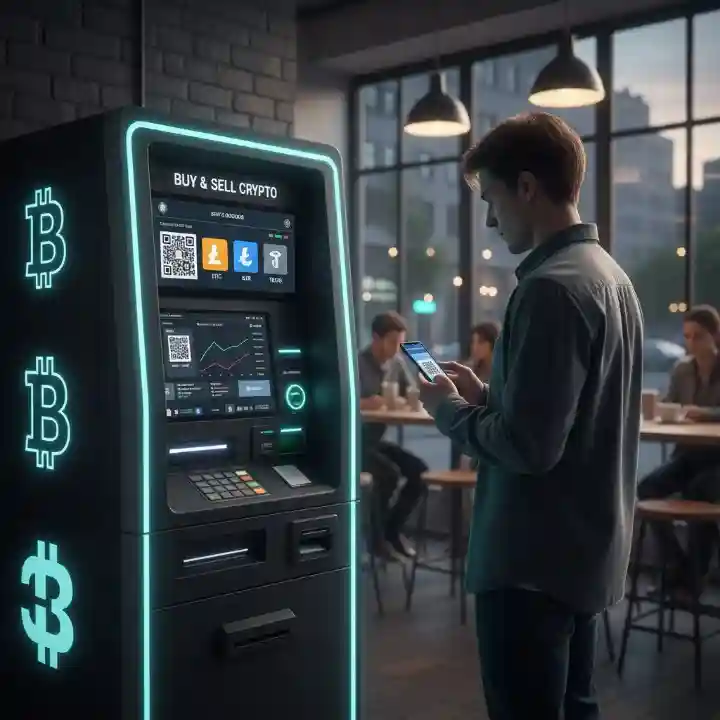The rise of Bitcoin ATMs around the globe has made converting cash to cryptocurrency easier than ever. But along with that convenience comes a dark side: a sharp increase in Bitcoin ATM scams and cryptocurrency fraud that exploit unsuspecting consumers, particularly targeting older adults. In 2025, these scams pose a growing financial risk and reputational challenge for the crypto industry. For business and finance professionals, understanding the dynamics of Bitcoin ATM scams cryptocurrency fraud 2025 is key to advising clients, shaping policies, and protecting assets.
This article offers a clear, straightforward exploration of how these scams operate, real-world impacts, and practical strategies to reduce exposure breaking down the complex details in a way that’s easy to grasp yet deeply informative.
What Are Bitcoin ATM Scams and Why Are They Increasing?
Bitcoin ATMs have become a popular way for individuals to buy or sell cryptocurrencies like Bitcoin using cash or debit cards. These machines are usually found in convenience stores, gas stations, and high-traffic urban areas.
The convenience, however, has attracted scammers who manipulate victims into transferring funds to fraudulent wallets. How? They typically make unsolicited calls or messages pretending to be from government agencies, tech support, or even family members in distress. The scammer guides the victim to use a Bitcoin ATM, often while staying on the phone, and directs them to scan a QR code transferring crypto directly to the scammer’s wallet.
Because cryptocurrency transactions are irreversible and largely untraceable, once money moves through these ATMs to scammers, victims rarely can recover funds. According to the Federal Trade Commission (FTC), losses from Bitcoin ATM scams topped $65 million in the first half of 2024 alone, with a majority of victims aged 60 and older being disproportionately affected.
Real-World Impact: How These Scams Play Out
Consider this scenario: Jane, a 62-year-old retiree, receives an urgent call claiming the IRS has frozen her bank account. The caller insists she must act quickly to protect her savings and directs her to a nearby Bitcoin ATM. Following step-by-step instructions, Jane deposits $15,000 through the machine, scanning a QR code the caller provided. Within minutes, the funds vanish into the scammer’s crypto wallet.
This experience, unfortunately, is far from rare. Other scams involve fake investment opportunities, tech support frauds, and impersonation of trusted persons or businesses all leveraging Bitcoin ATMs as rapid payment portals.
Law enforcement and consumer agencies have issued warnings. Michigan’s Attorney General and California’s Department of Financial Protection and Innovation have both initiated crackdowns, including imposing limits on daily transaction amounts and closer regulation of crypto kiosk operators to curb abuse.
Breaking Down the Problem in Easy Terms
Imagine you have a vending machine that sells candy bars, but once you pay, the candy disappears and only the crook behind the machine receives the money. The Bitcoin ATM scam works similarly: victims pay money into what seems like a trustworthy machine, but all funds go directly to criminals. There’s no “customer service” to reverse or refund transactions.
Because the transactions happen in cryptocurrency, which unlike traditional banks does not have reversal procedures, scammers enjoy a perfect crime vehicle: the transfer is immediate, anonymous, and irreversible.
Strategies to Reduce the Risk of Bitcoin ATM Scams
For individuals, businesses, and financial advisors, the good news is that many scams can be prevented or mitigated by paying attention to warning signals and adopting common-sense habits:
-
Never Respond to Urgent, Unsolicited Requests: Be suspicious if you receive unexpected calls or messages pressuring instant payment or crypto transfers.
-
Always Verify Independently: Don’t trust contact numbers or websites provided by callers; instead, look up official information on your own.
-
Avoid Using Bitcoin ATMs for Emergency Payments: Legitimate agencies and businesses generally do not require payments via crypto ATMs.
-
Use Smaller Transaction Limits: If using Bitcoin ATMs, limit amounts to $1,000 or less per day per kiosk to comply with regulations and minimize exposure.
-
Educate At-Risk Groups: Encourage older adults and non-tech-savvy individuals to learn about common scams and safe payment options.
-
Leverage Technology: Use transaction monitoring tools where possible and report suspicious activity promptly.
Common Challenges and How to Overcome Them
Despite awareness, challenges remain:
-
Rapid Evolution of Scam Tactics: Scammers constantly change methods, requiring ongoing vigilance.
-
Limited Regulation and Oversight: Bitcoin ATM operators vary in compliance, leaving gaps open to abuse.
-
Victim Shame and Underreporting: Many victims hesitate to report losses, reducing law enforcement’s effectiveness.
-
Complexity of Cryptocurrency Technology: The relative novelty complicates consumer understanding and protection.
Addressing these requires coordinated efforts between regulators, law enforcement, industry players, and consumer advocates to strengthen laws, improve education, and enhance detection.
Personal Insights: Learning From Stories on the Ground
Reporting on consumer fraud for years, I’ve seen how education and swift action can dramatically reduce losses. One community center began hosting educational sessions on digital payments, significantly reducing senior citizens’ vulnerability to scams. In contrast, a lack of awareness in other groups led to devastating outcomes. Learning from these cases, widespread education and preventive technology deployment are key forces against rising Bitcoin ATM scams.
Conclusion: What Bitcoin ATM Scams Cryptocurrency Fraud 2025 Means for You
The rise of Bitcoin ATM scams and cryptocurrency fraud in 2025 is a cautionary tale illustrating the need for awareness and action in a rapidly digitizing financial world.
Key takeaways:
-
Bitcoin ATM scams exploit rapid, irreversible crypto transactions to defraud mainly older adults.
-
Losses easily reach tens of millions annually with cases rising sharply.
-
Prevention hinges on skepticism toward unsolicited demands, verification habits, and education.
-
Regulatory tightening and public awareness campaigns are underway but need strengthening.
Being informed and cautious protects your money and reputation. Share your stories or questions in the comments below, or consult cybersecurity and financial advisors for tailored scam defense strategies.
